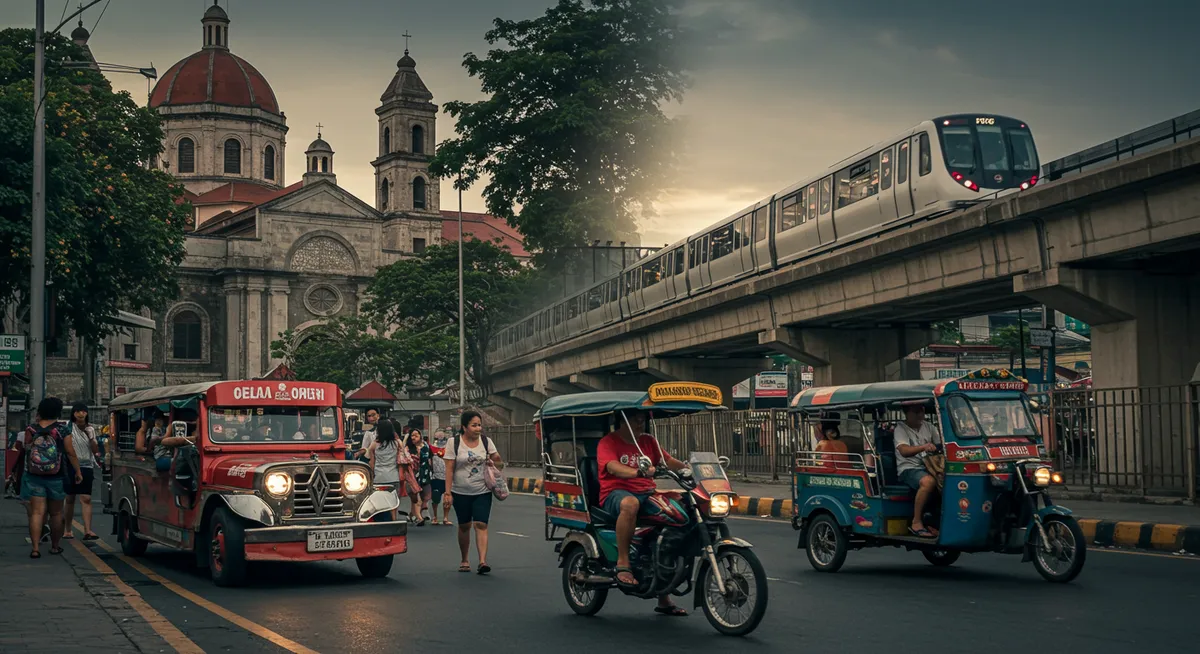
Getting Around Manila: Public Transportation Options
Table of Contents
Want to find the best travel deals for this destination? Chat with our travel hacking specialist!
Get Travel HacksCategory: getting-around-manila-public-transportation-options
Navigating Manila: Your Essential Public Transportation Guide
Having personally navigated Manila's bustling streets, I understand that getting around Manila can feel like a maze for first-time visitors. The city's energy is undeniable, but its unique mix of public transportation options requires a bit of savvy. This guide will walk you through Manila's diverse transit landscape, offering practical advice to help you move efficiently and confidently. Understanding these systems is key to unlocking the city's vibrant culture and attractions. To ensure a smoother trip, consider when you visit; finding the best time to visit Manila can significantly impact your travel experience.
Mastering Manila's Rail Transit: LRT & MRT
Manila's Light Rail Transit (LRT) and Metro Rail Transit (MRT) systems are indispensable for covering long distances, especially during peak hours. These elevated trains offer a fast, affordable way of getting around Manila, bypassing much of the notorious traffic. There are distinct lines, including LRT-1, LRT-2, and MRT-3, connecting key areas like Pasay, Quezon City, and Makati. My personal tip: always avoid rush hour (7-9 AM and 5-7 PM) if possible, as trains become incredibly crowded. You can purchase single-journey tickets or use a Beep Card for convenience, which is reloadable. Learn more about navigating the city in our comprehensive Manila travel guide.
The Iconic Jeepneys and City Buses
No visit to Manila is complete without experiencing a jeepney. These vibrant, chrome-adorned vehicles are the Philippines' most popular and unique form of public transportation. Jeepneys follow set routes, identified by signs on their front, though finding the right one can be a local art form. Passengers simply tap the roof or call out "Para!" (stop) to alight. Similarly, city buses cover extensive routes, often connecting major hubs and provinces. They're air-conditioned and generally more comfortable than jeepneys for longer rides. While sometimes slower due to traffic, both provide an authentic glimpse into local life. For those seeking things to do in Manila for first-timers, a jeepney ride is a cultural immersion.
Convenience at Your Fingertips: Taxis & Ride-Hailing Apps
For comfort and directness, taxis and ride-hailing apps like Grab (Southeast Asia's equivalent of Uber) are excellent choices for getting around Manila. Taxis are widely available, especially in tourist areas and shopping malls. Always insist on the meter, or agree on a fare beforehand if heading to less common destinations. Grab is incredibly popular and offers a more transparent pricing system, making it my preferred method, especially at night. You simply input your destination, and the fare is calculated upfront. This convenience allows you to explore various districts, knowing you can easily return to your accommodation in the best neighborhoods.
Short Distances: Tricycles & Pedicabs
For navigating shorter distances, particularly within barangays (local districts) or away from main roads, tricycles and pedicabs are your go-to. Tricycles are motorcycles with an attached sidecar, while pedicabs are bicycle rickshaws. These are perfect for accessing smaller streets where larger vehicles cannot go. However, fares are typically negotiated, so it's wise to have an idea of the local rates or ask a local for guidance. Remember to haggle politely and confirm the price before starting your journey. They provide a truly local, albeit sometimes bumpy, way of traversing Manila’s intricate urban fabric, often faster than walking in congested areas.
Frequently Asked Questions
Is it safe to use public transportation in Manila?
What is the cheapest way to get around Manila?
Can I use foreign credit cards for public transport in Manila?
Mastering Manila's diverse public transportation options can transform your visit from a logistical challenge into an exciting adventure. From the efficient rail lines to the iconic jeepneys and convenient ride-hailing services, each mode offers a unique perspective on the city. By understanding these choices, you're well-equipped for getting around Manila with ease and confidence. Embrace the local way of life, navigate the bustling streets like a pro, and discover all that this incredible city has to offer. For more travel insights and planning resources, be sure to visit Plan Vacation Asia.